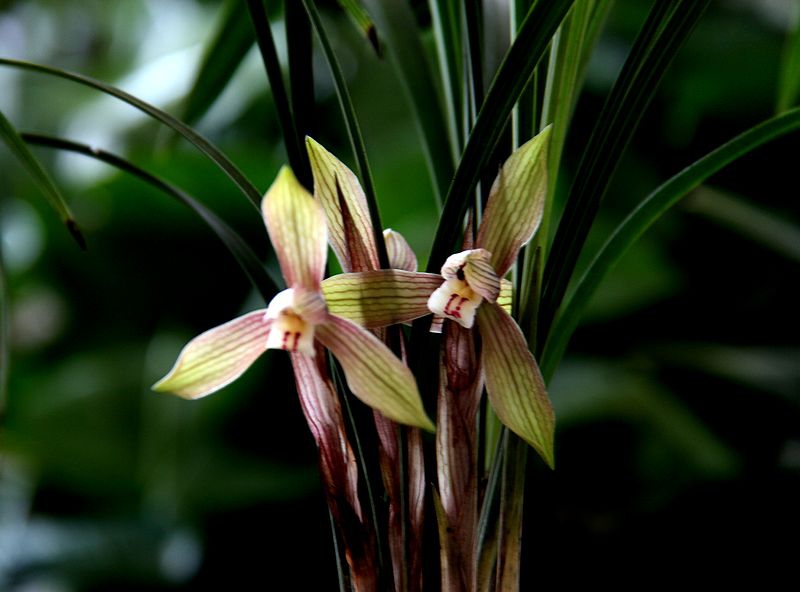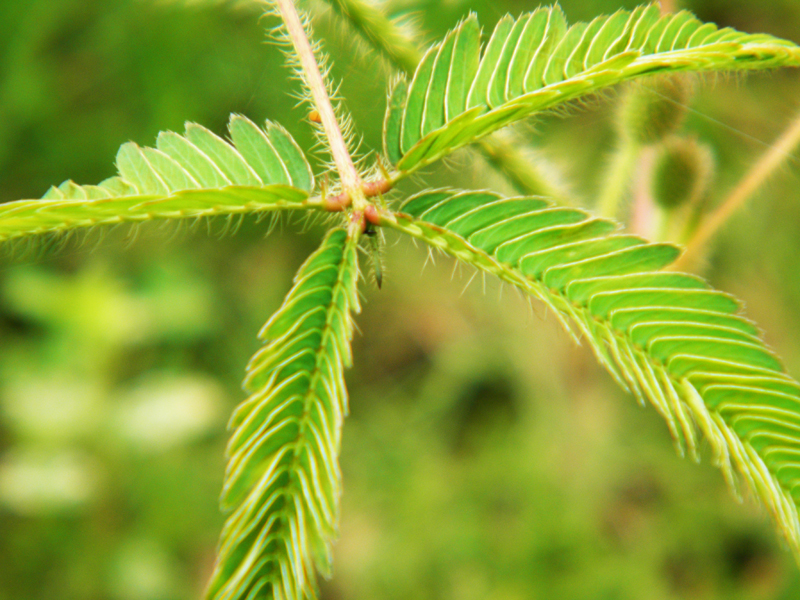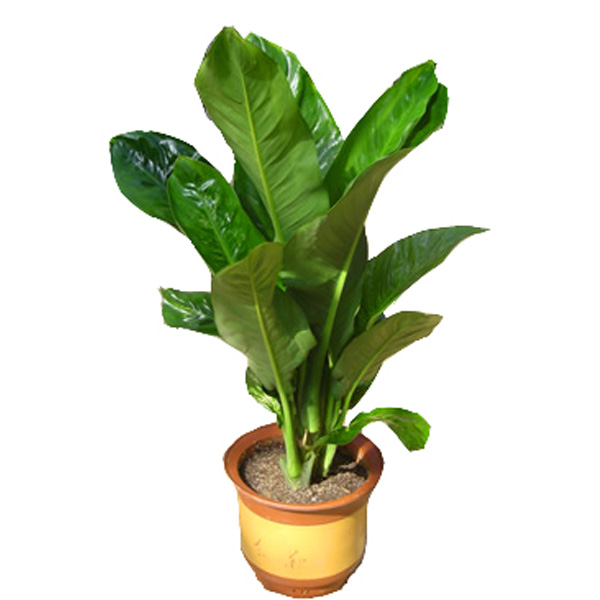Culture method of orchid flower picture of orchid flower
I came from the mountains with orchids and planted them in a small garden, hoping that the flowers would bloom early. I've listened to this song since I was a child. Orchid, also known as orchid grass, is a specialty flower in China, and it is also recognized as one of the top ten famous flowers in China. Orchids are born in the mountains and ravines of the south. With their elegant fragrance and elegant posture, orchids have been praised by ancient and modern poets and painters. There are indeed a lot of people who love orchids. Raising orchids in the south is as simple as raising horse lotus in the north, because the humid climate and slightly acidic soil and water in the south is the best "hotbed" for orchids to grow. Next, the editor of the net will introduce the mimosa orchid.

Culture method of orchid flower picture of orchid flower
The time of ramet propagation is what we usually call split-pots, which generally divide orchids that are too dense into multiple pots. Ramet propagation is common in the cultivation of orchids, especially in a small amount of family cultivation. Generally speaking, orchids can not be divided in the vigorous growing season, and the more suitable season is the dormant period of orchids, that is, before the new buds are unearthed from March to April, or after the orchids stop growing from September to October.
The specific method of ramet, first with the left hand five fingers into the orchid seedling, hold the basin soil, the right hand will basin upside down, and then tap around the basin, so that the basin and the basin soil away. Then grasp the hole in the bottom of the basin with your right hand so that you can separate the potted soil from the orchid plant. We should be careful not to make the soil clot split to ensure that the orchid root system will not be broken. Then you have to pat the dirt carefully and gradually get the old soil down and separate it. Cut off withered and yellow leaves, rotten bracts, rotten old roots, etc. Finally, the small plants with a wide distance between the two pseudobulbs were found from the plants in the larger clump, where they were easily loosened, cut open with scissors, and smeared with a small amount of carbon powder and sulfur powder, which can effectively prevent the wound from rotting. It should be noted that each part of the cut should have at least 3 false bulbs.
The choice of planting flowerpots should be appropriate, according to the size of orchid plants to choose different specifications of plastic pots or peat pots, porcelain pots can. However, it should be noted that it is best to use broken bricks at the bottom of the flowerpot, generally accounting for the height of the flowerpot, which is good for ventilation, water absorption and water retention.
The configuration of culture medium this time we introduce a new formula of culture soil, unlike the garden soil formula introduced in previous experience, this formula which is very suitable for orchids is to mix coconut shell fragments, sterilized bark blocks and volcanic rock fragments (that is, perlite). Of course, you can also add appropriate amount of organic fertilizer, if the ramet seedlings are very small, you can add high-quality water moss (aquatic plants). Because the water moss is elastic, it is easy to absorb water and fertilizer, and it plays a role in heat preservation, which is beneficial to the growth of seedlings.
In the third step of the method of pot planting, broken bricks have been added to the flowerpot at the bottom, and the culture soil configured in the fourth step has been added. First, half of the depth of the pot is added, and the added matrix is compacted by hand. It should be noted that the soil in the center of the basin had better be slightly higher than the surrounding pot soil. Put the seedlings in the center of the pot (it can be multiple plants, depending on the size of the flowerpot), and then add culture soil. Note that when the orchid root has been covered, lift the orchid seedling up gently, so that the root system of the orchid can fully extend in the basin, make the root pores fill the soil, and finally press the culture medium. it is best to cover the culture medium with a layer of gravel or ceramsite, and then pour water and put it in a cool place.
After the slow seedling protection after planting, the orchid entered the slow seedling stage. Due to the water demand and physiological changes in the slow seedling process, we should not have too much light during this period, and at the same time, we should pay attention to keeping the culture soil moist. The humidity can be ensured by foliar spray and the temperature can be lowered. About 1 week, the seedlings will enter the normal growth stage.
Watering management of orchids orchids are drought-tolerant plants. Watering too much will affect root respiration and cause root rot. The main principle of watering is to be flexible according to the weather, temperature and the size of orchid plants. Generally speaking, the soil is dried and then watered, so that "if it is not dry, it will be watered thoroughly." If it is an orchid seedling, its drought tolerance is relatively poor. So you should water it frequently. But don't overwater it. If the orchid blossoms, you should reduce the number of times of watering.
Fertilization management of orchids the orchids generally apply nitrogen fertilizer during the growing period, which can promote the orchids to grow rapidly, the plants are strong and the leaves are thick green. Phosphate fertilizer can promote root growth, but also conducive to flowering, so it is necessary to supply phosphate fertilizer at flowering stage. Generally speaking, orchids need more potash fertilizer after they grow up. It should be noted that fertilization must be combined with watering, preferably watering after fertilization, and foliar fertilizer can also be sprayed to ensure the vigorous growth of orchids.
How to cultivate purple orchid flower culture method of purple orchid flower
Purple orchid flower is a kind of orchid, named because it can produce beautiful purple flowers. This kind of plant is elegant and generous, beautiful and attractive in appearance, and is usually suitable for breeding at home. However, people do not know much about the breeding method of this purple orchid flower, and often do not know how to breed it best. Today, the editor specially talks about this problem for everyone.
1. Maintain nutrients
When raising purple orchid flowers at ordinary times, it is necessary to fry the withered flowers and pedicels in time after her flower fades to reduce their consumption of nutrients, but after reducing them, dip 1% of omethoate or dichlorvos solution with soft gauze or cotton balls and gently wipe its leaves and injuries to avoid diseases and insect pests.
2. Moderate lighting
Purple orchid flower, like other orchids, is a shade-loving plant. It also needs moderate sunlight during its growth. It should not be placed in shady areas where no sunlight can be seen for a long time, otherwise its leaves will grow only. And the number of flowers will continue to decrease. In addition, purple orchid flowers do not see the sun for a long time, but also prone to disease, so it should often be placed in an environment with enough scattered light.
3. Adequate fertilization
Purple orchid flower is a kind of fertilizer-loving plant. During breeding, it should be fertilized frequently to increase root development and leaf growth, but after purple orchid flower enters dormancy or semi-dormancy state, fertilizer supply should be reduced, otherwise it will add a finer burden, causing roots to rot, or leaves to yellowing.
4. Sterilization and disinfestation
During the cultivation of purple orchid flowers, we should also pay attention to the breeding environment and the hygiene around the flowerpots. Sterilization should be carried out frequently, and drugs such as virulent or chlorothalonil should be sprayed every seven days. Once, insecticides such as omethoate or dichlorvos are sprayed every ten days, but two hours after spraying, the leaves of purple orchid should be sprayed with clean water to avoid drug damage. Only in this way can purple orchid flowers thrive.
A course on Culture methods and steps of Orchid Flower
Orchid flower, also known as orchid, is one of the plants endemic to China. Now most of the orchid flowers in other countries in the world are introduced from China. It is a beautiful ornamental plant, the first of all flowers in people's eyesight, and it implies auspiciousness and a symbol of positive energy. People usually like to raise orchids at home, but if you want to raise orchids well, you must have a comprehensive understanding of its breeding methods, otherwise it is very tolerant of death. The following is my specific introduction to the method of orchid flower culture. If you like this kind of plant, you can focus on it.
1. Correct selection of soil for planting
Orchid flower culture should correctly select soil, this kind of plant likes fertile soil, it is best to use black mountain mud and peat soil and pastoral Gui to make culture soil, and then when planting orchid flowers, they should also plant it in the middle of the flowerpot and bury it in the soil. the upper layer compacts the soil and pours it with enough water. Slow the seedlings in a cool environment, and they will survive after half a month.
2. Sunlight and moisture
Sunlight and water are important conditions for breeding orchid flowers, it is a kind of light-loving plant, but it should be placed in an environment with sufficient scattered light, especially after entering summer, if it is placed on the windowsill or balcony, it should be shaded in time. In addition, cultivated orchid flowers should be moderately watered. In spring and summer, it can be watered every 3 to 4 days, but after entering late autumn and winter, it is necessary to reduce water supply, otherwise it will cause a variety of diseases.
3. Fertilizer
Fertilizer and construction team are also important steps in cultivating orchid flowers. although this plant likes fertilizer, it can not apply thick fertilizer. Usually, bean cake water and horseshoe sauce residue water should be used as the main fertilizer, which should be used every 10 to 15 days. Potassium dihydrogen phosphate can also be added before and after he enters the flowering stage, so that it can blossom as soon as possible and prolong the flowering period.
4. Self-cultivation
When many people breed orchid flowers, they plant them in flowerpots, fertilize and water them on time, but never pay attention to pruning, which is also wrong. in the process of breeding, it must be pruned its old leaves and withered leaves in time, so as to promote the growth of new leaves. In addition, after the orchid flower has a disease, it is necessary to cut off all the infected branches and leaves so as not to affect other healthy leaves.
- Prev

The information of mimosa how to cultivate mimosa
Mimosa (scientific name: Mimosapudica) has many nicknames because of its unique physiological habits, such as laughing grass, sensitive grass, drinking grass, mimosa, ugly grass, mimosa and husband-and-wife grass and so on. Shy steppe is found in tropical America.
- Next

The Culture method of Green Bawang Plant
Just hearing the name is very domineering. Green overlord (English name: DieffenbachiaBIGBEN) is a perennial herbaceous foliage plant of Araceae. Its broad leaves have attracted the attention of many people. Its ability to purify air is very strong, such as formaldehyde, toluene and ammonia.
Related
- Fuxing push coffee new agricultural production and marketing class: lack of small-scale processing plants
- Jujube rice field leisure farm deep ploughing Yilan for five years to create a space for organic food and play
- Nongyu Farm-A trial of organic papaya for brave women with advanced technology
- Four points for attention in the prevention and control of diseases and insect pests of edible fungi
- How to add nutrient solution to Edible Fungi
- Is there any good way to control edible fungus mites?
- Open Inoculation Technology of Edible Fungi
- Is there any clever way to use fertilizer for edible fungus in winter?
- What agents are used to kill the pathogens of edible fungi in the mushroom shed?
- Rapid drying of Edible Fungi

